Ever since I got into 3D printing I’ve always dreamed of building a detailed scale model replica. I knew it would not be an easy way to accomplish this but I was determined to at least try. After in-depth studies of air brush painting, modulation and weathering techniques I decided to go with a tank replica. That meant I was going headfirst into one of the most complex areas of scale modelling: trying to replicate scratches of various depths, streaks of rust, dirty, oily, grimy, muddy parts … I was exalted with the possibilities and rushed to work.
Sadly, my 3d modelling skills weren’t as good as I’ve hoped for this kind of task, so designing all the intricate parts and details were out of the question. I then turned my focus to a model market place which had the blueprints of such a replica and I continued from there.
I’ve spent somewhere near 15 hours adjusting the files to my wishes and 3D printer that I own, splitting parts, enlarging details, fixing the newly modified files. The 3D printing alone lasted for a whooping 300 hours, some of which included some retries of parts I wasn’t completely happy with. During post-processing work is where I’ve spent around 30 hours sanding, priming and filling out with putty the different imperfections of the printed model. It was slow progress but the scale replica was beginning to shape beautifully.
The last step was to paint the model and I began by choosing 3 similar colors on which the current modulation is based. That gave me a good base on which to further enrich the looks from a chromatic point of view. There were 8 steps in total during which I’ve applied different effects raging from simulation of chipping, streaking, mud splatter to dust effects, applying color filters, washes, different stains (oil, engine grime etc) and the most fun of them all, mud. The latter one was achieved by combining a plaster compound with pigments, water and some fluid retarder for easy application and the result was pretty nice.
In the end, all the paint work was sealed with a satin varnish for protection.
More info: Facebook
3D printing the tank wheels
A preview of early stages of the scale model – sanding and filling imperfections that make up for a lengthy and tedious process
All 62 of the pieces needed to assembly the scale mode are post-processed and waiting to be primed before applying the paint
I kicked off the painting part of the project with the interior. Here’s a view of the engine room being primed
Interior work is done and waiting to apply the satin varnish for protection
Different angle focusing on the engine room part of the interior and the cabin crew in the front
Bird- eye view of the interior with focus on the cabin crew
Part of the turret interior
Because the interior color differs from the exterior one I’ve applied masking tape on the openings during priming and painting
Exterior base color and modulation is done
After applying chipping and worn effects it’s time to finish of with applying dust & rust pigments to further enrich the chromatics
And here’s an in-between pigment application preview of the effect that was achieved
The latest step was to add mud effects to the tracks. Made from a mix of plaster and pigments and covered by a glass varnish finish to give the wet effect
And the final results are…
Here!
1Kviews
Share on FacebookI'm not a fan of scale models but this looks just amazing! Really impressive
I'm not a fan of scale models but this looks just amazing! Really impressive
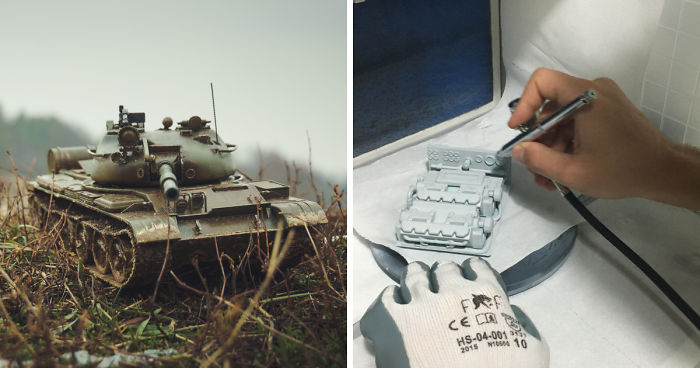
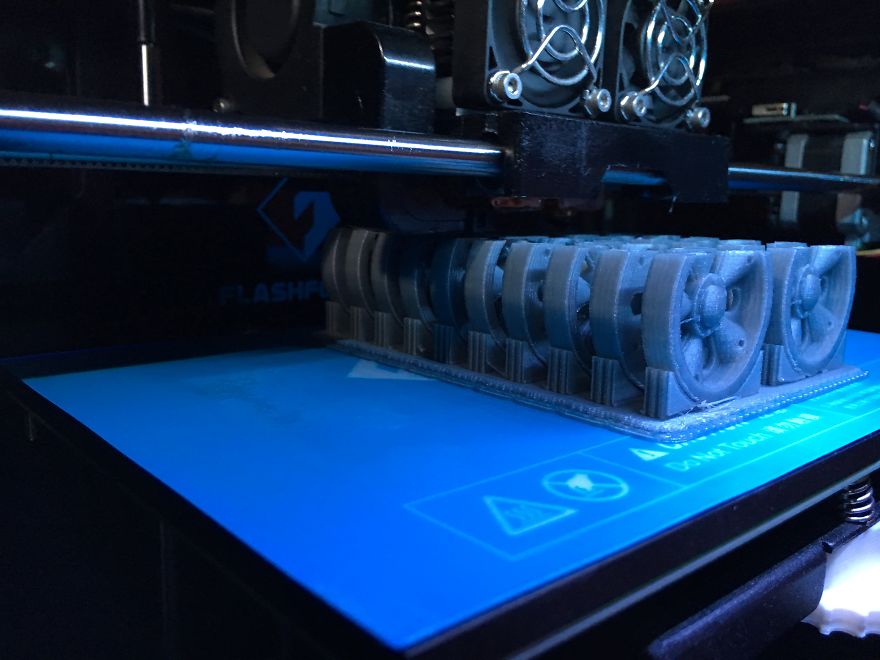
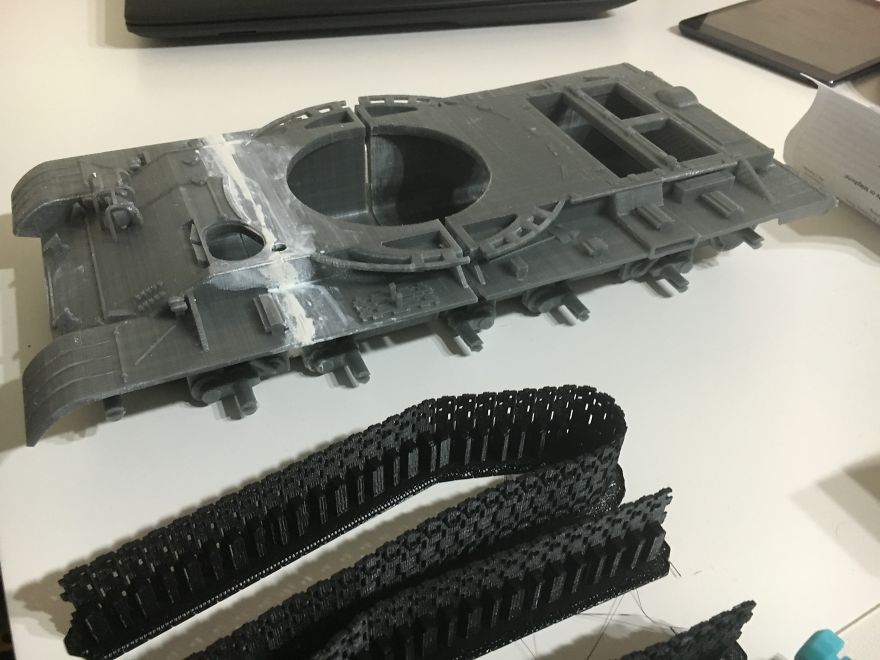
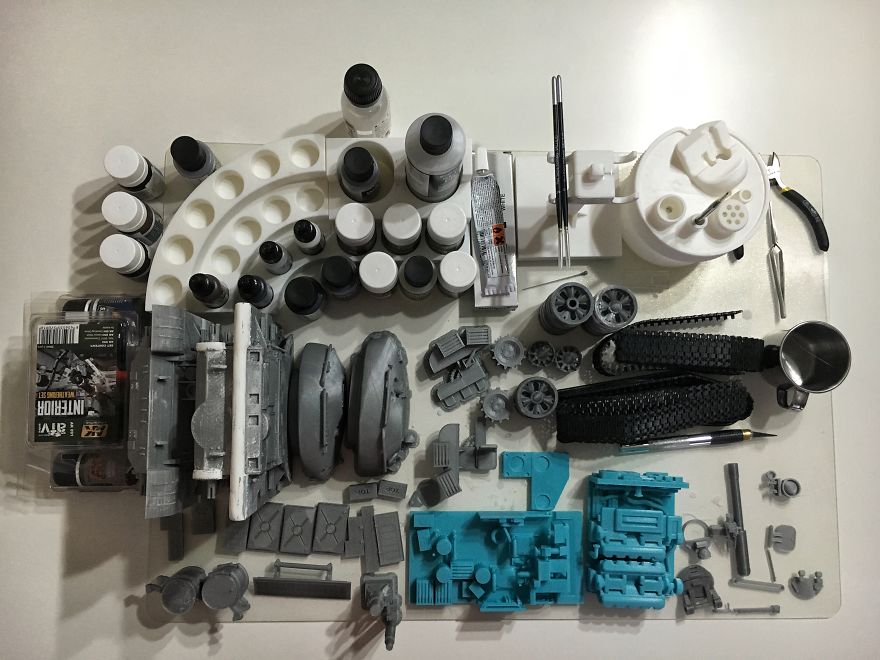
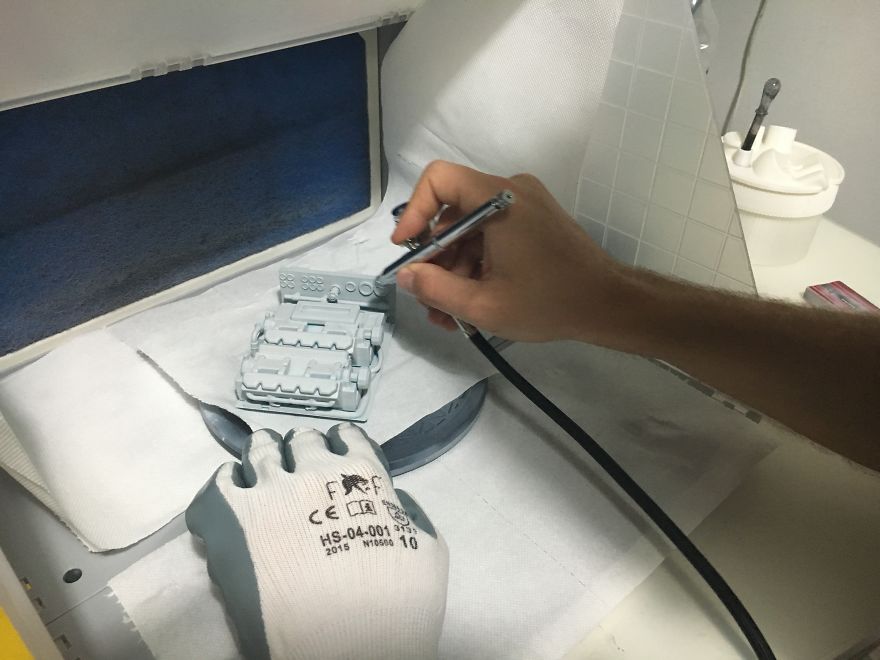
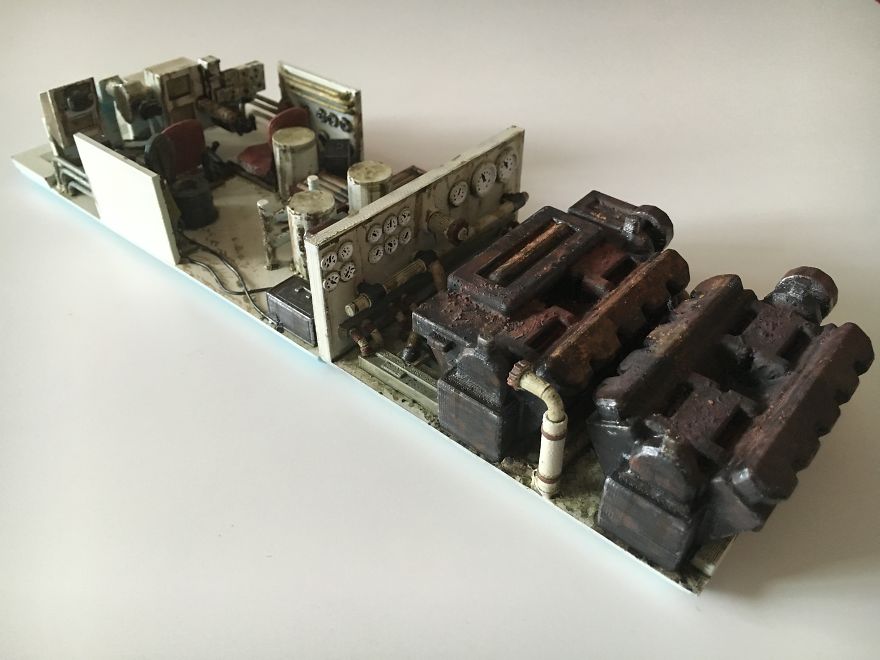
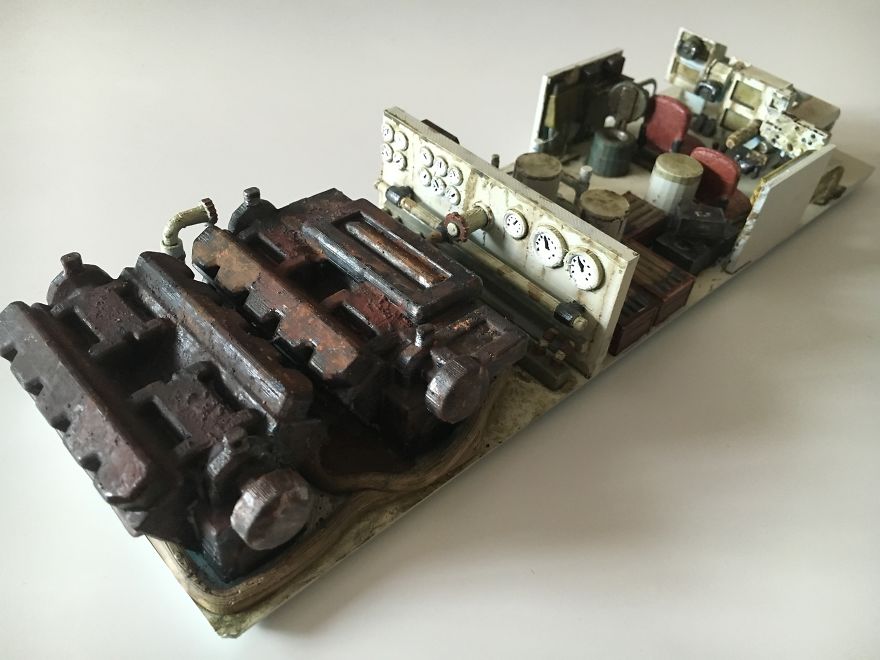
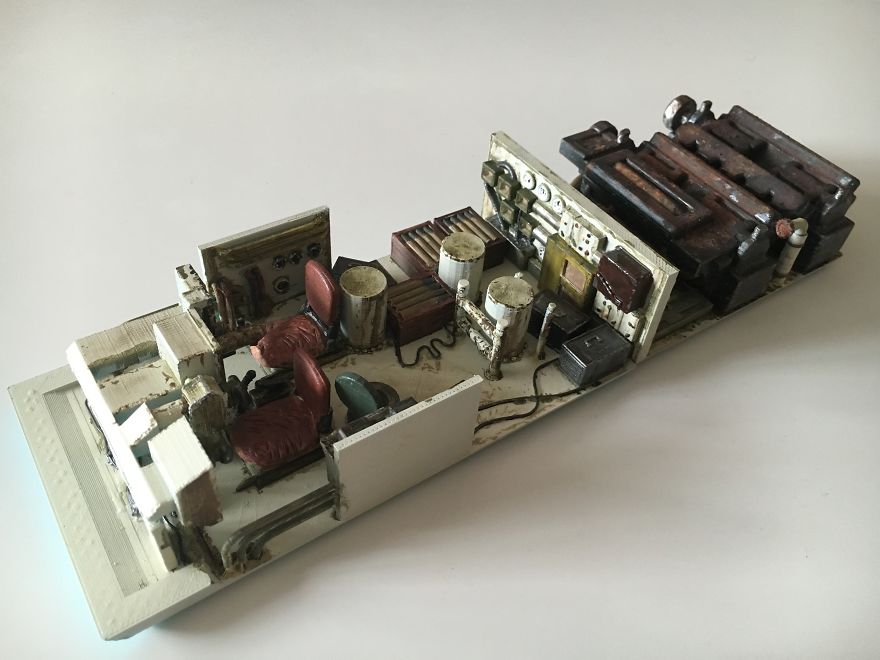
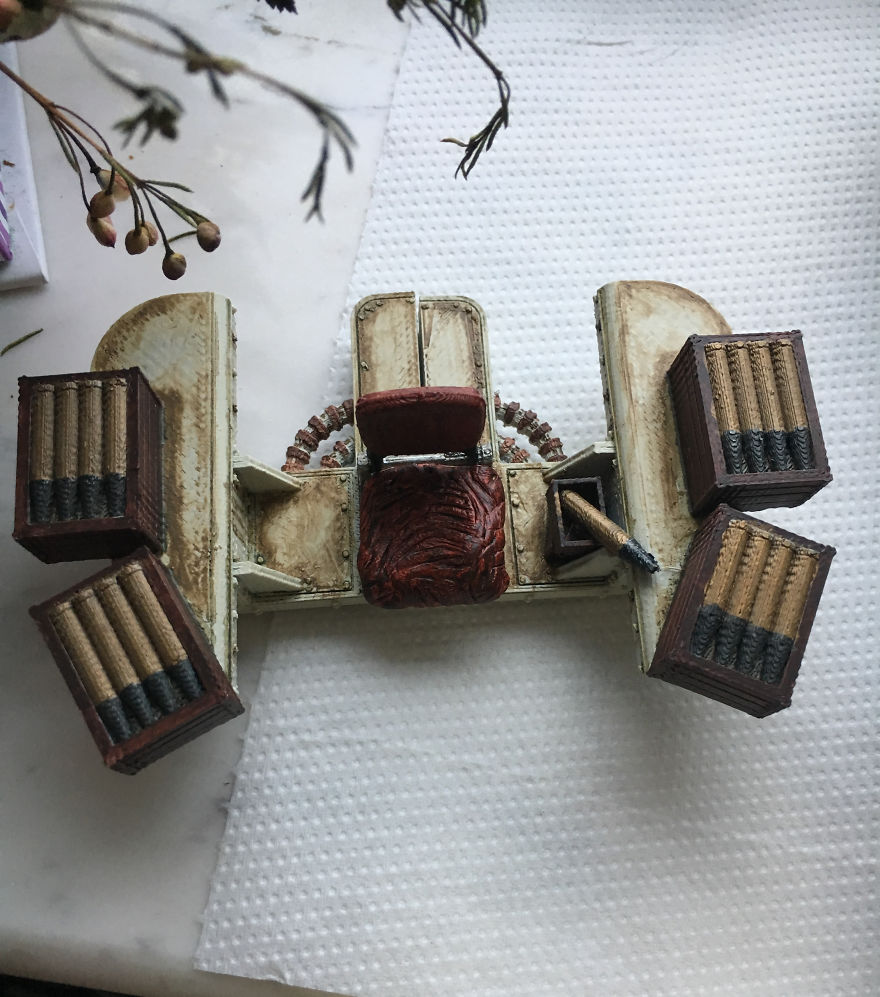
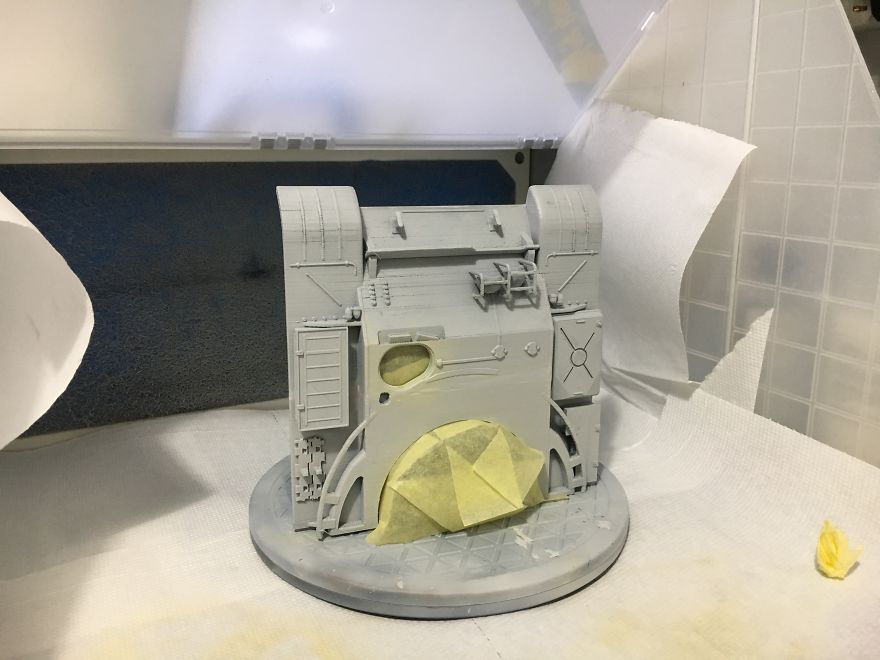
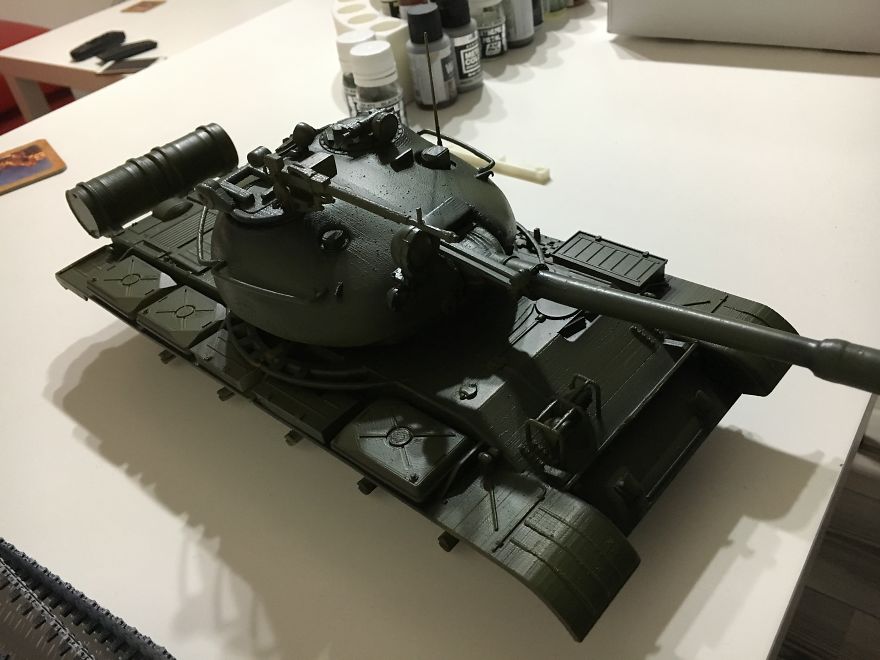
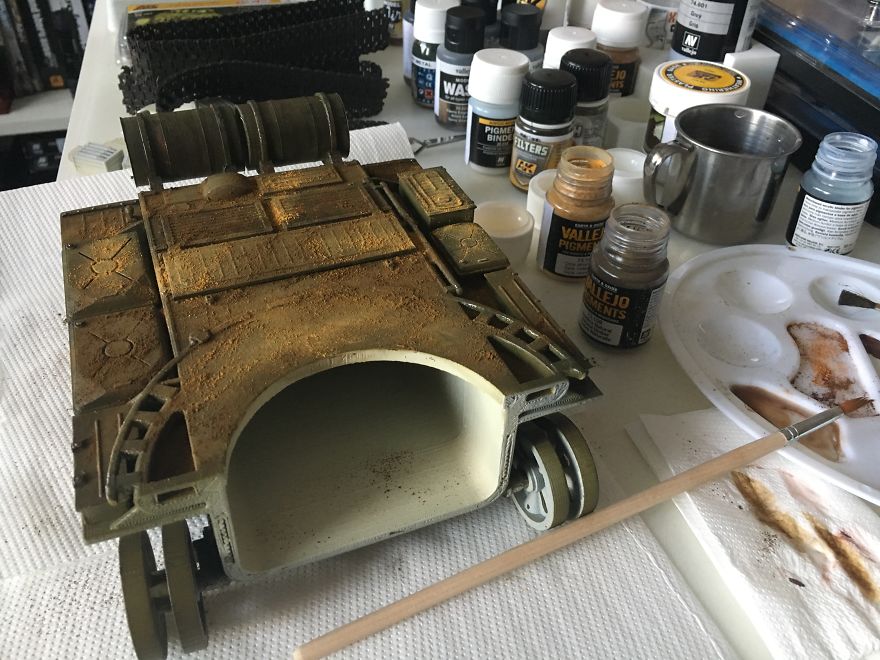
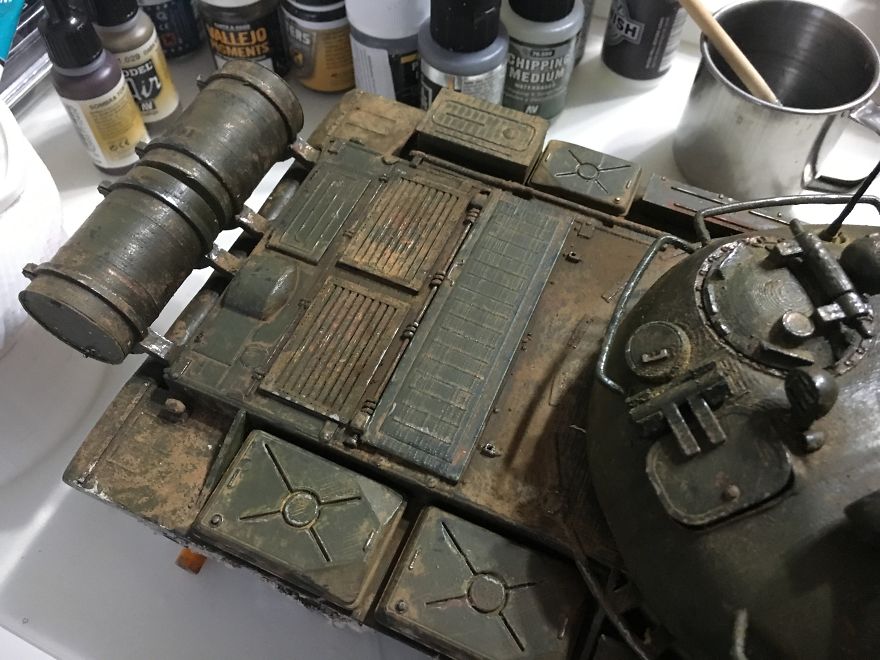
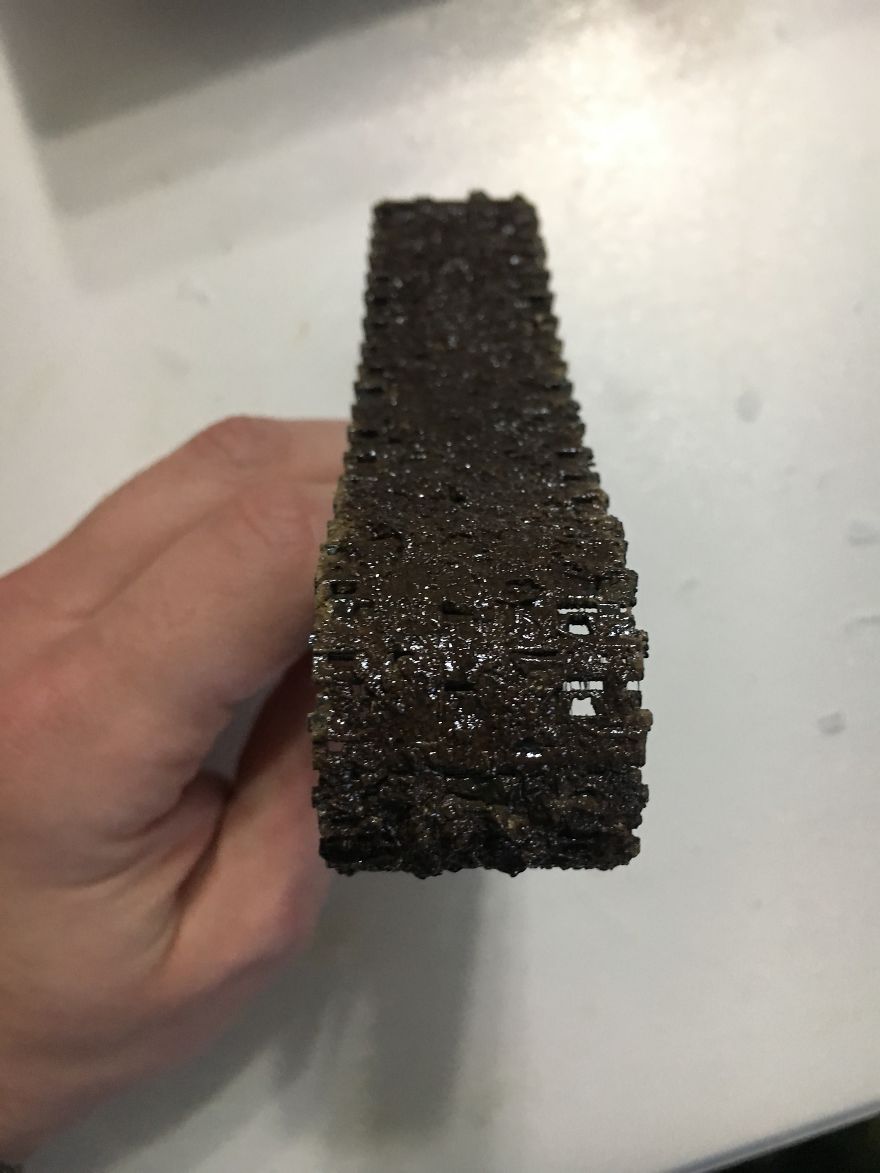
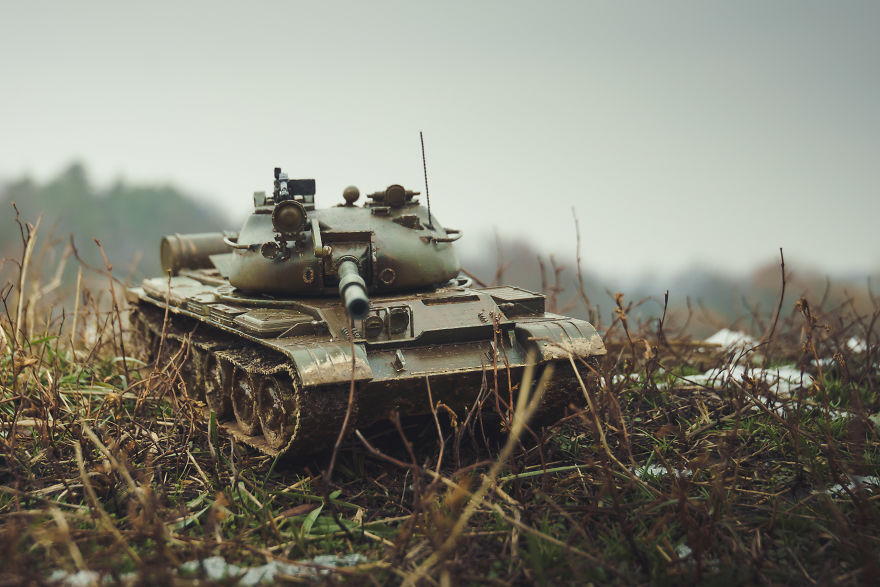
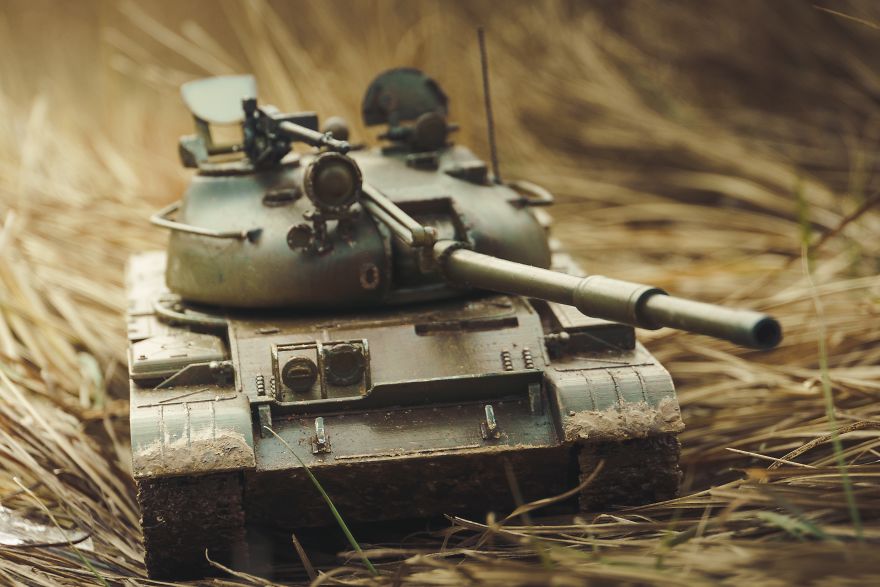
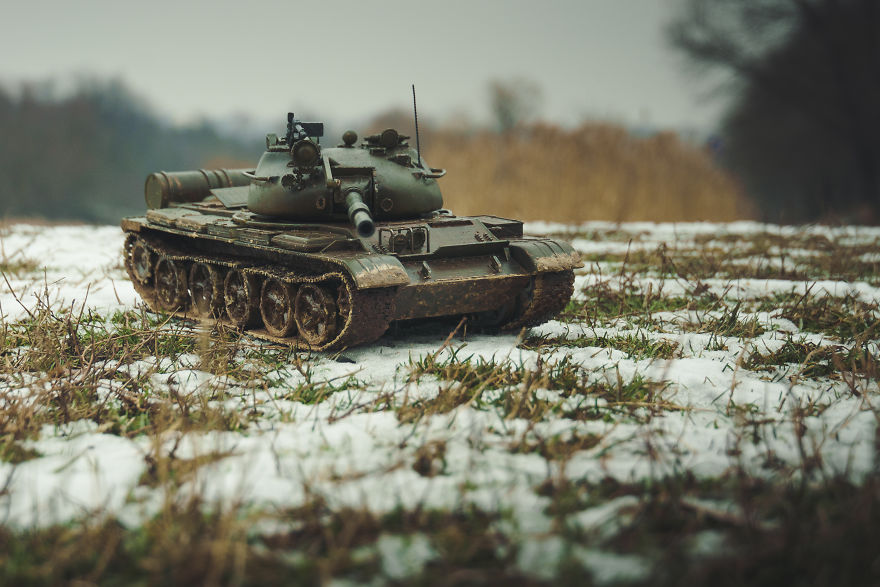
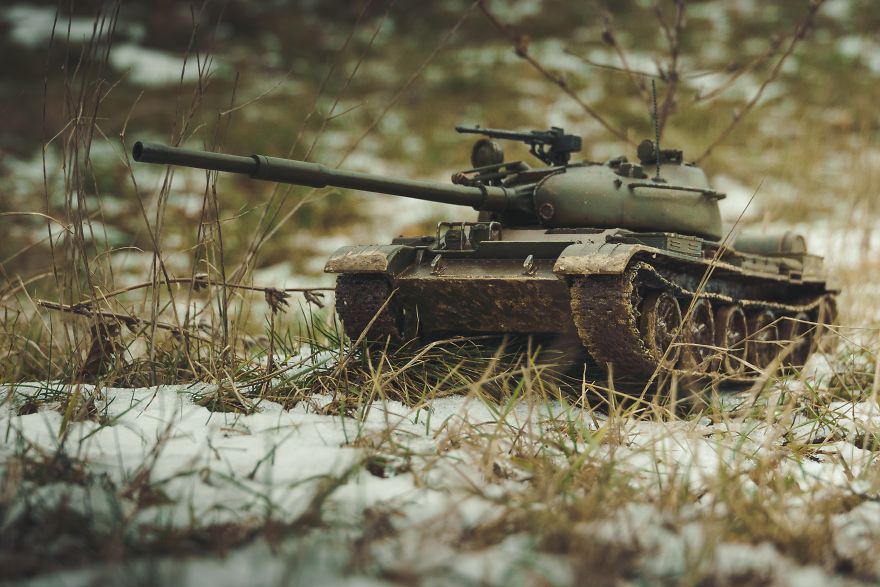
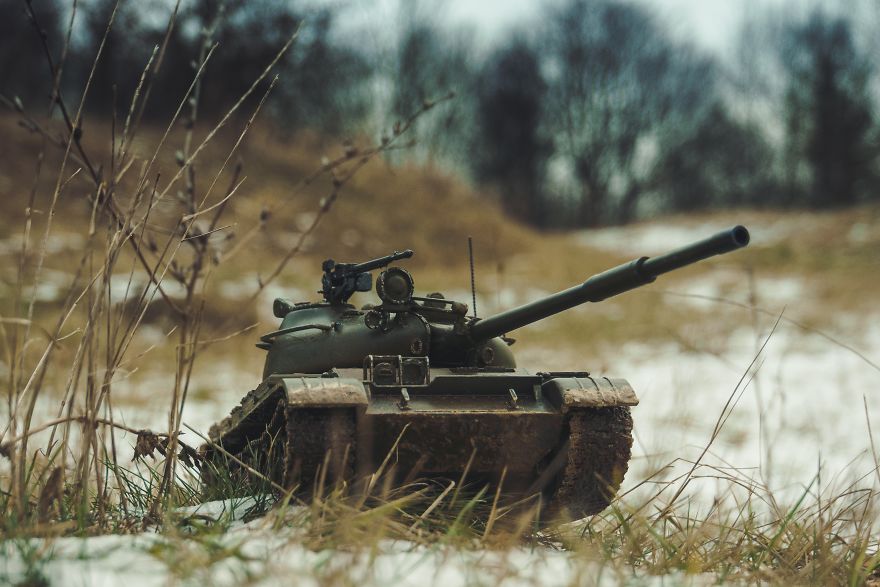
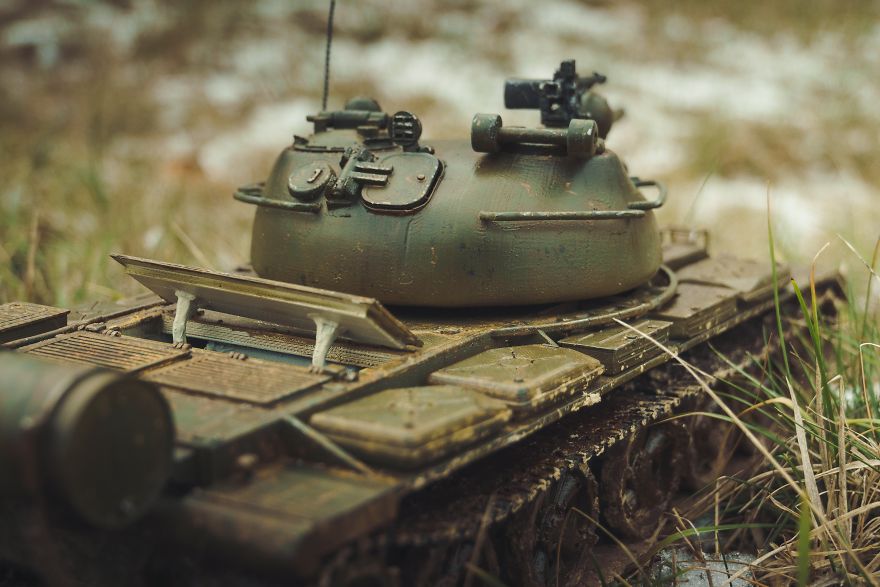
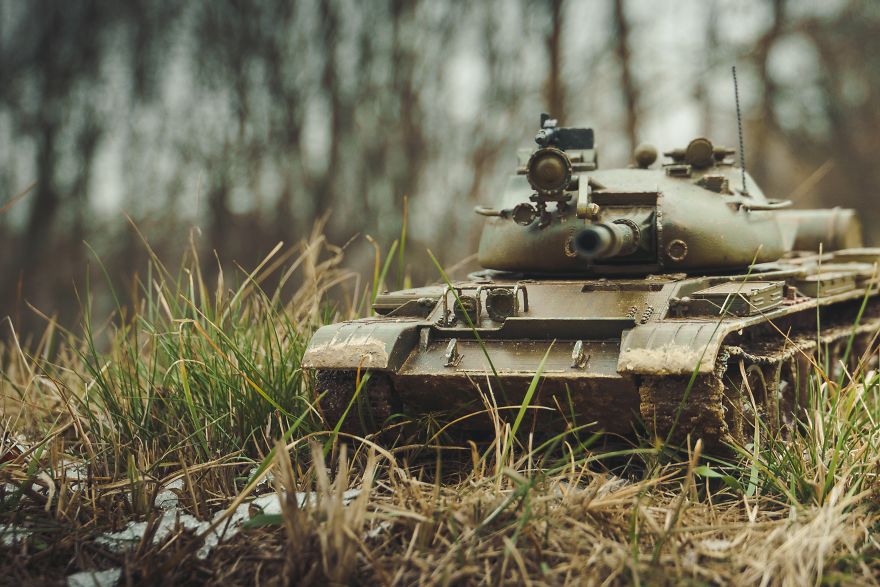
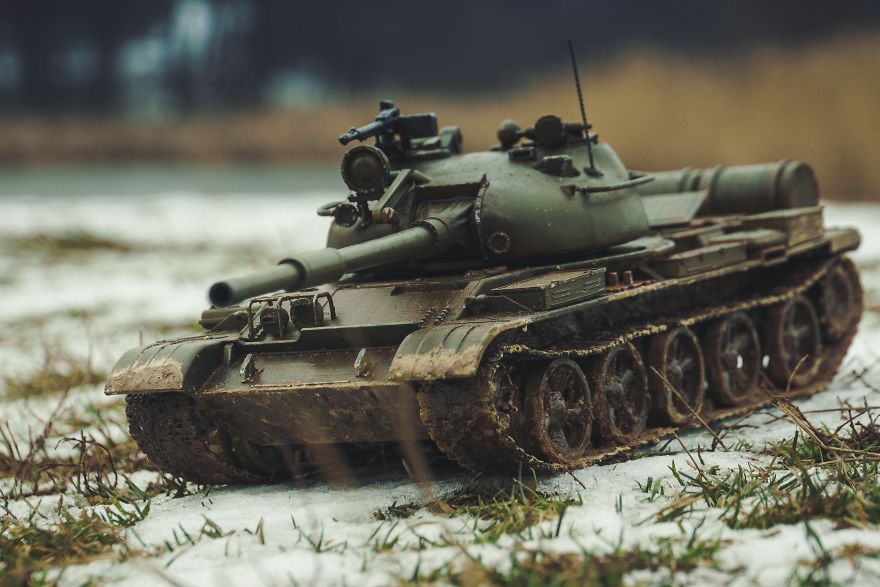



38
3